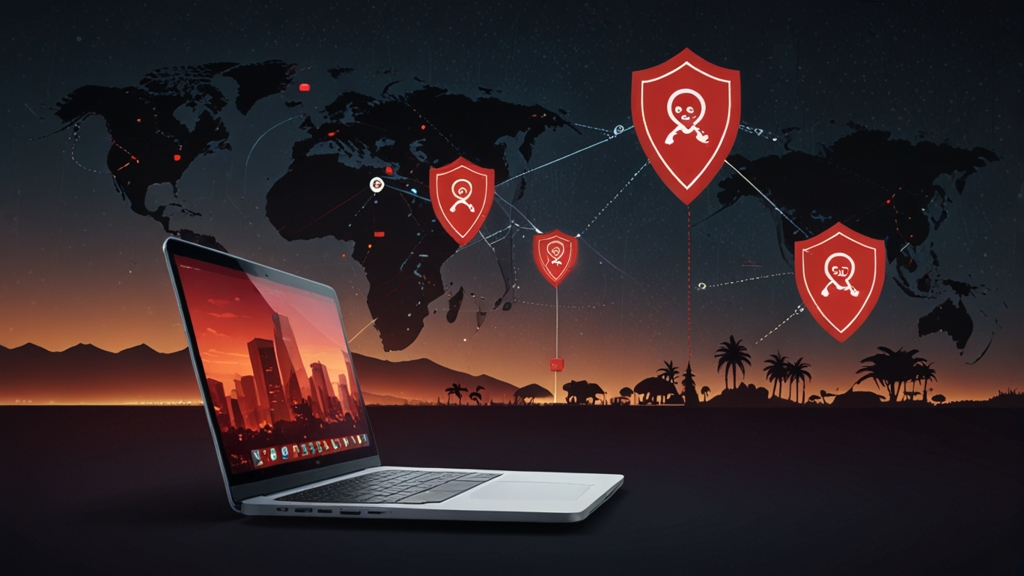News
The Role of a DUI Lawyer: Navigating the Complexities of Drunk Driving Cases

Driving under the influence (DUI) is a serious offense that carries significant legal and personal consequences. The complexities involved in DUI cases necessitate the expertise of a specialized attorney known as a DUI lawyer. These legal professionals play a crucial role in defending individuals charged with DUI, ensuring their rights are protected, and striving for the best possible outcomes. This article explores the multifaceted role of a DUI lawyer, the legal processes involved, and the importance of their expertise in navigating DUI cases.
Understanding DUI Charges
DUI charges arise when an individual operates a vehicle with a blood alcohol concentration (BAC) above the legal limit, which is typically 0.08% in most jurisdictions. However, DUI laws vary significantly from state to state, and even a BAC below the legal limit can result in charges if the driver is deemed impaired. DUI charges can also involve other substances, including illegal drugs and prescription medications that impair driving ability.
The Role of a DUI Lawyer
A DUI lawyer is a criminal defense attorney who specializes in handling DUI cases. Their primary objective is to provide legal representation to individuals accused of DUI, guiding them through the legal process and advocating on their behalf. Here are some key aspects of their role:
- Case Evaluation and Legal Advice:
Initial Consultation: A DUI lawyer begins by conducting an initial consultation to understand the details of the case. They assess the evidence, including police reports, breathalyzer results, and witness statements, to determine the strengths and weaknesses of the prosecution’s case.
Legal Guidance: Based on their evaluation, the lawyer provides the defendant with informed legal advice, explaining the potential consequences and available defense strategies.
- Investigation and Evidence Gathering:
Challenging Evidence: DUI lawyers meticulously examine the evidence against their clients. They scrutinize the procedures followed by law enforcement during the arrest, looking for any violations of the defendant’s rights. This includes assessing the accuracy and reliability of breathalyzer and field sobriety tests.
Collecting Evidence: Defense attorneys may also gather additional evidence, such as surveillance footage, witness testimonies, and expert opinions, to build a strong defense.
- Defense Strategy Development:
Negotiating Plea Bargains: In some cases, a DUI lawyer may negotiate with the prosecution for a plea bargain. This could involve reduced charges or alternative sentencing options, such as attending alcohol education programs or community service.
Trial Preparation: If the case goes to trial, the DUI lawyer prepares a robust defense strategy. This includes questioning the credibility of the prosecution’s evidence, cross-examining witnesses, and presenting evidence that supports the defendant’s innocence or mitigates their culpability.
- Court Representation:
Pre-Trial Motions: DUI lawyers file pre-trial motions to suppress evidence obtained unlawfully, which can significantly weaken the prosecution’s case.
Trial Advocacy: During the trial, the lawyer represents the defendant, presenting arguments, questioning witnesses, and challenging the prosecution’s evidence. Their goal is to create reasonable doubt in the minds of the jurors or judge.
The Importance of Specialized Expertise
The legal landscape of DUI cases is complex and constantly evolving. DUI lawyers possess specialized knowledge of state-specific DUI laws, scientific principles behind BAC testing, and the nuances of criminal defense. This expertise is crucial for several reasons:
- Navigating Legal Procedures: DUI cases involve intricate legal procedures, including administrative hearings for license suspension, pre-trial motions, and courtroom trials. A DUI lawyer’s familiarity with these processes ensures that the defendant’s rights are protected at every stage.
- Scientific Knowledge: Understanding the science behind BAC testing and impairment is essential for challenging the prosecution’s evidence. DUI lawyers often collaborate with expert witnesses, such as toxicologists and forensic scientists, to provide a robust defense.
- Mitigating Consequences: A DUI conviction can result in severe penalties, including fines, license suspension, mandatory alcohol education programs, and even imprisonment. DUI lawyers work to mitigate these consequences, striving for reduced charges, alternative sentencing, or case dismissal.
Conclusion
A DUI lawyer plays a pivotal role in the criminal justice system, providing essential legal representation to individuals charged with DUI. Their expertise in evaluating evidence, developing defense strategies, and navigating complex legal procedures is invaluable in ensuring fair and just outcomes for their clients. By understanding the intricacies of DUI cases and advocating on behalf of defendants, DUI lawyers uphold the principles of justice and protect the rights of those accused of driving under the influence.
News
The 6.4 Powerstroke: Ford’s Turbulent Torque Titan – Power, Problems, & Potential

Hook: Ever felt that satisfying shove in your back when a big diesel turbo finally spools up? For owners of 2008-2010 Ford Super Duty trucks, that surge often came courtesy of the 6.4 Powerstroke – an engine packing serious muscle wrapped in a complex, emissions-choked package. Was it a powerhouse hero or a high-maintenance headache? Let’s crack open the hood on Ford’s most controversial modern diesel.
Unpacking the 6.4L Powerstroke Beast
So, what exactly is the 6.4 Powerstroke? Introduced in 2008 as a direct replacement for the troubled 6.0L, Ford aimed high. This wasn’t just an update; it was a technological leap designed to meet brutal new emissions standards while delivering the grunt Super Duty buyers demanded. Think of it like strapping a sophisticated emissions lab onto a sledgehammer.
Ford and International Truck (Navistar) collaborated again, creating a 6.4-liter turbocharged V8 diesel. But this wasn’t your grandpa’s clattering diesel. It boasted cutting-edge tech:
- Sequential Twin Turbos: Imagine two runners in a relay race. A small turbo spools up lightning-fast off idle for instant response, handing off seamlessly to a larger turbo for massive mid-range and top-end power. No more “turbo lag” dread when pulling out onto the highway with a trailer!
- High-Pressure Common Rail with Piezo Injectors: Precision is king. Fuel is pumped to a common rail at incredibly high pressure (up to 26,000+ psi!). Piezo injectors, reacting faster than traditional solenoid types, squirt minute, perfectly timed bursts of fuel for cleaner, more efficient combustion. It’s like using a scalpel instead of a garden hose.
- Diesel Particulate Filter (DPF): The emissions elephant in the room. This honeycomb filter traps soot. To clean it, the engine performs “regeneration” cycles, injecting extra fuel to burn the trapped soot into ash. Crucial for clean air, but a source of major headaches (more on that soon).
The result? Impressive factory numbers: 350 horsepower and a stump-pulling 650 lb-ft of torque. This engine felt powerful, especially in the crucial 1500-3000 RPM range where trucks do most of their work – perfect for towing your 5th wheel or loaded gooseneck.
Under the Hood: Where Power Met Complexity
Let’s get specific about what made the 6.4L tick (and sometimes ticked owners off):
Key 6.4 Powerstroke Specifications & Tech
| Feature | Specification/Description | Significance |
|---|---|---|
| Displacement | 6.4 Liters | Large V8 platform for substantial torque production. |
| Configuration | 90-Degree V8 | Traditional, compact design fitting the Super Duty engine bay. |
| Block Material | Cast Iron | Robust but heavy; contributed to heat retention issues. |
| Cylinder Heads | Cast Iron, 4-Valve Per Cylinder | Improved airflow over predecessors, but still prone to gasket stress. |
| Turbocharging | Sequential Twin-Turbo (Garrett GT32 small + GT37 large) | Eliminated lag, delivered massive mid-range power surge. A true highlight. |
| Fuel System | High-Pressure Common Rail (HPCR) with Piezo Injectors | Ultra-precise fueling for power & emissions; injectors are expensive to replace. |
| Max Power | 350 hp @ 3000 rpm | Strong output for the era, competitive with rivals. |
| Max Torque | 650 lb-ft @ 2000 rpm | Massive pulling power right in the working RPM range. Ideal for towing. |
| Emissions Controls | DPF, EGR (Exhaust Gas Recirculation), SCR (Selective Catalytic Reduction – Later Models) | Complex system essential for compliance, source of many reliability woes. |
| Bore x Stroke | 3.87 in x 4.13 in | Oversquare design favoring higher RPM operation. |
Living With the 6.4L: The Power & The Peril
There’s no sugarcoating it: the 6.4 Powerstroke earned a reputation. While significantly more reliable out-of-the-box than the 6.0L it replaced, it inherited and introduced its own set of notorious challenges:
- The Dreaded DPF & Regeneration Cycles: This is arguably the biggest pain point.
- Fuel Dilution: During a “regen,” extra fuel is injected on the exhaust stroke. Sometimes, this raw fuel washes past the piston rings into the oil pan. Over time, this thins your engine oil (imagine watering down your coolant), drastically reducing its lubricating properties and protection. Check your oil level and smell religiously!
- Clogging & Failure: DPFs clog with ash over time (a normal byproduct). Short trips prevent complete regens, accelerating clogging. A clogged DPF creates massive exhaust backpressure, choking the engine and triggering limp mode. Replacement costs are staggering.
- EGR Cooler Clogs: Soot recirculated by the EGR system loves to clog the EGR cooler, reducing efficiency and potentially causing overheating.
- Head Gasket Woes: That robust cast-iron block and heads? They expand and contract at different rates under intense heat and cylinder pressures (especially when towing hard). This puts immense stress on the head gaskets, which were often the weak link. Failure leads to coolant loss, overheating, and potential hydrolock (a death sentence for an engine). Upgraded head studs (ARP) are a common and often necessary fix for tuned or heavily worked trucks.
- Radiator & Oil Cooler Issues: The radiator design sometimes led to premature failure of the integrated transmission cooler, mixing coolant and ATF – a disastrous cocktail. The oil cooler, vital for controlling engine temps, was prone to clogging with casting sand residue or carbon, leading to overheating and accelerated wear.
- High-Pressure Fuel System Sensitivity: Those amazing piezo injectors and the HPCR pump are precision instruments. Contaminated fuel (water, dirt) is their kryptonite. A single failed injector can cause misfires, wash down a cylinder, and potentially damage the expensive turbochargers. Quality fuel filters and regular changes are non-negotiable.
Is the 6.4 Powerstroke a Lost Cause? Not Necessarily.
Despite the challenges, many 6.4 Powerstroke trucks are still working hard today. How? Informed ownership and proactive maintenance are absolutely key:
- Religious Maintenance: Oil changes with strictly recommended spec oil (like 10W-30 CJ-4) every 5,000 miles or less are critical, especially with potential fuel dilution. Fuel filter changes every 10-15k miles are cheap insurance. Coolant flushes and using Ford’s specific Gold coolant matter. Neglect is this engine’s worst enemy.
- Monitoring is Mandatory: Invest in a quality aftermarket gauge (like Edge CTS or Banks iDash) to monitor:
- Exhaust Gas Temperatures (EGTs – crucial during towing/regen)
- Engine Oil Temperature (EOT) vs. Coolant Temperature (ECT) – a growing difference indicates oil cooler clogging.
- Fuel Pressure
- DPF Soot Load % (if possible)
- Don’t rely solely on the factory dummy gauges!
- The “Delete” Question (Proceed with Extreme Caution): Many owners sought relief by deleting the DPF, EGR, and sometimes the SCR system. This can eliminate regen issues, fuel dilution, and improve reliability/power if done correctly. However:
- It’s illegal for on-road use under the Clean Air Act. Fines are massive.
- It requires custom tuning expertise. Bad tuning can destroy your engine.
- It may void warranties (though most are expired) and complicate resale/smog checks.
- This is a significant legal and ethical consideration, not just a mechanical one.
- Targeted Upgrades: Addressing known weak points before they fail can save money long-term:
- Head Studs: ARP studs are the gold standard for preventing blown head gaskets under load.
- Improved Oil Cooler: Aftermarket coolers with better flow and filtration can help.
- Coolant Filtration System: Helps catch debris before it clogs the oil cooler or radiator.
- Updated Radiator: If replacing, ensure you get the latest design revision.
The 6.4 Powerstroke Legacy: A Pivotal, Flawed Powerhouse
The 6.4 Powerstroke occupies a unique, somewhat awkward place in Ford diesel history. It wasn’t the unmitigated disaster some claim, nor was it a paragon of reliability. It was a bold, technologically advanced engine pushed to the bleeding edge of emissions compliance while delivering impressive, usable power.
- The Good: That sequential turbo setup delivered an intoxicating power surge. The torque made towing heavy loads feel effortless. When running right, it was a joy for the heavy-duty driver.
- The Bad: The complexity of its emissions systems became its Achilles’ heel. Fuel dilution, DPF failures, and head gasket issues created costly nightmares for unprepared owners. Its lifespan in Ford trucks was relatively short (just 3 model years: 2008-2010), partly due to these challenges and the subsequent split with Navistar.
- The Legacy: It served as a crucial, albeit painful, stepping stone. The lessons learned (especially the perils of early DPF systems and the critical need for robust engine architecture) directly influenced the design of its successor, the vastly more reliable and successful 6.7L Powerstroke introduced in 2011. It proved Ford could build a powerful, modern diesel, but also highlighted the immense difficulty of balancing raw power, efficiency, and stringent emissions controls.
Should You Buy a Truck with a 6.4 Powerstroke?
This is the million-dollar question (sometimes literally!). Here’s the straight talk:
- Proceed with Extreme Caution & Deep Pockets: Never buy one without a thorough pre-purchase inspection by a diesel specialist (not just a general mechanic). Demand maintenance records. Assume major repairs will be needed.
- Budget for the Worst: The purchase price is just the entry fee. Have a significant repair fund ($5k-$10k+) readily available. A blown engine or failed emissions system can cost more than the truck’s value.
- Know Your Tolerance: Are you a skilled DIYer with tools and time? Or will you rely solely on expensive shop labor? The latter makes ownership financially risky.
- Deleted Trucks: While potentially more reliable mechanically, remember the significant legal and ethical implications. Resale can be difficult, and future enforcement risks exist. Buyer beware.
- Alternatives Exist: Consider the more reliable (though less powerful) 7.3L Powerstroke, the later 6.7L Powerstroke, or competitors like the Duramax LBZ/LMM or Cummins 5.9L/6.7L if reliability is your top priority.
5 Tips if You Own (or are Considering) a 6.4 Powerstroke
- Maintenance is Non-Negotiable: Stick to severe-duty service intervals like clockwork. Oil (5k miles), fuel filters (10-15k), coolant (flush per manual), air filter.
- Monitor Vital Signs: Get gauges for EGT, EOT/ECT Delta, Fuel Pressure. Watch them like a hawk, especially when towing or during regens.
- Address Weak Points Proactively: If keeping it long-term, budget for head studs and a coolant filtration system before they cause catastrophic failure.
- Use ONLY Recommended Fluids: The correct oil (CJ-4, now often CK-4/SP), coolant (Ford Gold or equivalent), and fuel additives (as needed) are critical.
- Find a Trusted Diesel Mechanic: Build a relationship with a shop that knows the 6.4L inside and out. Don’t wait for a breakdown to find one.
The Final Word
The 6.4 Powerstroke remains a fascinating chapter in diesel truck history. It delivered exhilarating power wrapped in a package that demanded respect, meticulous care, and often, deep pockets. For the passionate enthusiast willing to invest the time, knowledge, and money, it can still be a rewarding powerhouse. For the average buyer seeking a trouble-free workhorse? It’s often a gamble best avoided. Its story is one of impressive engineering ambition colliding head-on with the harsh realities of emissions compliance and durability under stress.
What’s your take? Do you own a 6.4L? Love it? Hate it? Share your experiences and lessons learned in the comments below – the diesel community thrives on shared knowledge!
You May Also Read: How to Increase the Speed of Your Electric Bike Safely
FAQs
What are the most common problems with the 6.4 Powerstroke?
The most frequent and costly issues are Diesel Particulate Filter (DPF) failures/clogging, fuel dilution of engine oil during regeneration cycles, blown head gaskets (often due to inadequate factory head bolts), clogged oil coolers, and radiator/transmission cooler failures leading to fluid mixing. High-pressure fuel system failures (injectors, pump) are also expensive concerns.
Is deleting the 6.4 Powerstroke worth it?
Deleting the DPF/EGR systems can improve reliability, eliminate fuel dilution, and increase power/efficiency. However, it is illegal for on-road use under federal law, carries significant fines if caught, requires expert tuning to be safe for the engine, complicates resale and emissions testing, and is an ethical consideration regarding emissions. Proceed with extreme caution and full awareness of the legal risks.
How long does a 6.4 Powerstroke engine last?
Longevity varies wildly. With impeccable maintenance, monitoring, and addressing known weak points (head studs, coolant filtration), some reach 200,000+ miles. Neglecting maintenance, ignoring warning signs, or subjecting it to constant heavy towing without upgrades can lead to major failures (engine, turbo, fuel system) well before 150,000 miles. It’s not known for consistent high-mileage longevity like the 7.3L or later 6.7L.
What causes fuel in the oil on a 6.4 Powerstroke?
This is primarily caused by the Diesel Particulate Filter (DPF) regeneration process. During “regen,” extra fuel is injected late in the combustion cycle (often on the exhaust stroke) to raise exhaust temperatures and burn off trapped soot in the DPF. Some of this raw fuel can wash past the piston rings and contaminate the engine oil, thinning it and reducing its lubricating properties.
Is the 6.4 Powerstroke better than the 6.0?
It’s a mixed bag. The 6.4L was generally more reliable initially than the 6.0L and delivered significantly more power and torque, especially with its sequential turbos. However, the 6.4L introduced the complex and problematic DPF/emissions systems, and its major failures (like engine replacement due to cracked pistons or catastrophic failure) can be even more expensive than fixing a 6.0L. The 6.0L, once properly “bulletproofed,” is often seen as potentially more viable long-term than a stock 6.4L facing its inherent emissions system issues.
What oil should I use in my 6.4 Powerstroke?
Crucially, use a CJ-4 or the newer CK-4/SP specification diesel engine oil in the correct viscosity (typically 10W-30, sometimes 15W-40 depending on climate – check your manual). Using the wrong oil (especially gasoline engine oil) can lead to accelerated wear and DPF damage. Change it religiously every 5,000 miles or less due to the risk of fuel dilution.
Why did Ford stop making the 6.4 Powerstroke?
Ford only used the 6.4L Powerstroke for the 2008, 2009, and 2010 model years. Its short lifespan was due to a combination of factors: significant reliability issues stemming from its complex emissions systems (DPF, EGR), the high cost of warranty repairs for Ford, ongoing legal disputes between Ford and Navistar (the engine’s co-developer/manufacturer), and Ford’s desire to bring diesel engine production fully in-house. This led directly to the development of Ford’s own 6.7L Powerstroke launched in 2011.
News
That Mysterious 770-404-4754 Call: Your Guide to Understanding & Blocking Unwanted Calls

Ever feel that little jolt when your phone rings with an unknown number? Your day pauses, wondering: “Is this important? Or just another interruption?” If 770-404-4754 has been lighting up your screen lately, leaving you with more questions than answers, you’re far from alone. Let’s unravel the mystery behind this specific number and, more importantly, arm you with simple strategies to take back control of your phone.
What We Know About 770-404-4754
That 770-404-4754 popping up isn’t likely your long-lost cousin or a secret admirer. Here’s the lowdown based on widespread reports and telecom data:
- The Basics: It’s a valid North American number with the 770 area code, covering Atlanta’s suburbs. Think areas like Marietta, Roswell, or Lawrenceville.
- The Catch: Despite being a real number, there’s zero public evidence linking 770-404-4754 to a legitimate, registered business or organization. It’s essentially a ghost number in official directories.
- The Real Story – Your Neighbors Are Talking: Dive into consumer complaint forums (like those on the FCC website or caller review sites), and a clear, consistent picture emerges. People receiving calls from 770-404-4754 overwhelmingly report:
- Robocalls: Pre-recorded messages, often about debts you don’t owe, fake warranty expirations, or “urgent” legal matters.
- Spoofing: This number is frequently used as a mask. Scammers fake caller ID to make it look like a local call (770-404-4754) to trick you into answering, even though the call originates from anywhere in the world.
- Scam Central: Common themes involve aggressive “debt collection” for non-existent debts, threats of arrest or legal action (law enforcement impersonation), or phishing attempts to steal personal info.
Why Does This Keep Happening?
Scammers use numbers like 770-404-4754 because spoofing local numbers works. We’re more likely to answer a call that looks like it’s from nearby. It’s a cheap, effective tactic for them, exploiting our natural tendency to trust local area codes.
Taking Back Your Phone: Practical Protection Steps
You’re not powerless against these phantom calls. Here’s your action plan, as straightforward as fixing a leaky faucet:
- Don’t Answer, Don’t Engage: If you don’t recognize 770-404-4754 (or any suspicious number), let it go to voicemail. Legitimate callers will leave a message. Answering, even just to yell “Stop calling!”, can sometimes signal to automated systems that your number is active, leading to more calls.
- Block It Directly: Use your phone’s built-in blocking feature:
- iPhone: Go to Recents > Tap the (i) next to 770-404-4754 > Scroll down > “Block this Caller”.
- Android: Open your Phone app > Recents or Call History > Long-press on 770-404-4754 > Select “Block/report spam”.
- Report It Loud and Clear: Help authorities track these patterns:
- FCC Complaint: File a complaint at fcc.gov/complaints. Detail the number (770-404-4754), date/time, and nature of the call (e.g., “robocall about fake debt”).
- FTC Complaint: Report scams at reportfraud.ftc.gov.
- Leverage Your Carrier’s Tools: Major carriers (Verizon, AT&T, T-Mobile, etc.) offer free scam call blocking and labeling services (like Call Filter, Call Protect, Scam Shield). Turn them on! They act like a neighborhood watch for your phone line. Some offer enhanced features for a small fee.
- Consider a Third-Puty App (Optional but Powerful): Apps like Nomorobo, Hiya, or Truecaller act like super-powered spam filters, using massive databases to identify and block known scam numbers, including patterns associated with spoofed numbers like 770-404-4754. Many have free tiers.
Myth Busting: “But it’s a local number!”
Yes, 770-404-4754 looks local. But spoofing technology makes this meaningless. Scammers can make their call appear to come from any number, including ones in your own backyard. Treat unexpected calls from unknown numbers, regardless of area code, with caution.
Your Peace of Mind Action Plan: 3 Things to Do Today
- Block 770-404-4754: Take 30 seconds right now and block that number on your phone.
- Enable Carrier Protection: Check your phone settings or carrier account – turn on those free scam shields. It’s like locking your front door.
- Report the Call: File that quick report with the FCC. Your report helps build cases against these scammers.
Dealing with calls from numbers like 770-404-4754 is an annoying modern reality, but it doesn’t have to control your day. By understanding the scam, taking simple blocking actions, and reporting it, you become part of the solution. Have you encountered this number or similar ones? What strategies have worked best for you in silencing the unwanted ring?
You May Also Read: Facebook Class Action Lawsuit Settlement: Everything Users Need to Know
FAQs
Who actually owns 770-404-4754?
While it’s a valid 770 number, there’s no public registration linking it to a legitimate business. It’s primarily used (and spoofed) by telemarketers and scammers.
Is answering a call from 770-404-4754 dangerous?
While not physically dangerous, answering can confirm your number is active, potentially leading to more scam calls. Engaging with scammers could also put you at risk of fraud or intimidation.
Can I get 770-404-4754 completely stopped?
You can block it on your specific phone, preventing calls from that exact number from reaching you. However, because scammers spoof many numbers, you might still get calls from other similar-looking fakes. Carrier tools and apps help block these patterns.
Should I call 770-404-4754 back?
Absolutely not. This could connect you directly to a scam operation, potentially incurring charges, or confirming your number is active. Let unknown numbers go to voicemail.
Is this a debt collector or the police?
Based on widespread reports, it’s highly unlikely. Legitimate debt collectors and law enforcement agencies do not typically use tactics like robocalls or spoofing local numbers for initial contact in the manner associated with 770-404-4754. These are common scam disguises.
What if they left a voicemail threatening me?
Do not respond to the voicemail. Save it if possible, but definitely report the details (number, content) to the FTC and FCC. Legitimate entities do not make arrest threats or demand immediate payment via phone for unknown debts.
Will reporting 770-404-4754 actually do anything?
Yes! While one report might not stop a global operation, mass reporting helps the FCC and FTC identify major scam campaigns, track spoofing patterns, and take enforcement actions. Your report contributes to the bigger fight.
News
UtdPlug: Your 24/7 Lifeline to the Heartbeat of Manchester United Fandom

Ever found yourself frantically refreshing five different apps on matchday, desperate for reliable updates while dodging spoilers? Or scrolled through endless, soulless transfer rumors, wondering if anyone actually understands what it feels* like to be a Red? You’re not alone. In the sprawling, often chaotic digital landscape of football fandom, finding a trusted source that combines speed, accuracy, and genuine passion can feel like searching for a needle in a haystack. Enter UtdPlug – the independent, fan-powered digital hub that’s become the essential lifeline for Manchester United supporters worldwide.
Forget the sterile corporate feeds and the knee-jerk punditry. UtdPlug was forged by United fans, for United fans. It’s not just a news aggregator; it’s a living, breathing community pulsating with the raw energy of Old Trafford, delivered straight to your pocket 24 hours a day, 7 days a week. This is where the global Red Devils family truly connects.
Why Traditional Coverage Leaves Fans Wanting (And How UtdPlug Fixes It)
The mainstream sports media machine often operates with inherent limitations:
- The Speed Trap: Official channels can be slow. Big publications have layers. UtdPlug, nimble and fan-focused, thrives on real-time updates.
- The Authenticity Gap: Corporate voices lack the visceral understanding of a fan’s hopes, fears, and history. UtdPlug’s commentary comes steeped in lived experience.
- The Platform Problem: Being locked into one website or app is restrictive. Fans live across multiple platforms.
- The Noise Factor: Sensationalism and unverified rumors muddy the waters. Trust is easily eroded.
UtdPlug dismantles these barriers. It’s built on the principle that the best insights come from those who share the passion, coupled with a relentless commitment to getting it right.
UtdPlug vs. Mainstream Coverage: Key Differences
| Feature | Typical Mainstream Coverage | UtdPlug Experience |
|---|---|---|
| Perspective | Often corporate, external | Fan-driven, authentic, from the heart |
| Speed | Can be delayed by processes | Real-time, lightning-fast updates |
| Tone | Can be neutral or sensationalist | Passionate, informed, community-focused |
| Depth of Analysis | Variable, sometimes surface-level | Nuanced, tactical, fan-intelligent |
| Accessibility | Often limited to one primary channel | Omni-channel: Website, X, IG, FB, Threads |
| Community Focus | Limited interaction | Built around active fan engagement |
The UtdPlug Ecosystem: Where Red Devils Connect 24/7
UtdPlug isn’t confined to one corner of the internet. It’s a dynamic ecosystem designed to meet fans wherever they are:
- The Command Center: UtdPlug Website: The central hub for comprehensive articles, in-depth match reports, exclusive interviews, and archived content. Think of it as your digital Old Trafford library.
- The Real-Time Wire: X (Formerly Twitter): The undisputed king for breaking news, instant match updates, transfer bombshells, and vibrant, rapid-fire fan discussion. Follow UtdPlug here for pulse-of-the-moment action.
- The Visual Theatre: Instagram: Where the glory, the agony, and the sheer spectacle of United come alive. Expect stunning graphics, match highlights, behind-the-scenes glimpses, and impactful player features.
- The Conversation Hub: Facebook & Threads: Platforms fostering deeper discussion, longer-form fan opinions, polls, and community interaction. Perfect for post-match analysis debates or transfer window speculation marathons.
This multi-platform strategy ensures you’re never more than a tap away from the latest, no matter your preferred digital hangout.
Also Read: Decoding the Policy Tapestry of Meet the press s76e49
Beyond Headlines: The Pillars of UtdPlug’s Content
What truly sets UtdPlug apart is the quality and breadth of its fan-centric content:
- Real-Time News You Can Trust: From team sheet leaks and injury updates minutes before kickoff to confirmed transfer signings, UtdPlug prioritizes speed without sacrificing reliability. They understand the agony of waiting and cut through the noise.
- Match Analysis That Speaks Your Language: Forget generic pundit speak. UtdPlug’s analysis dives into the tactical nuances, player performances, and key moments with the understanding only true fans possess. Was that Bruno Fernandes pass genius or desperation? They get it.
- Transfer Window Insanity, Decoded: The silly season is stressful. UtdPlug separates concrete interest from agent-driven fluff, analyzes potential fits, tracks developments obsessively, and provides realistic fan perspectives on targets and departures. Who’s actually coming in? What does it mean for the team?
- Exclusive Interviews & Features: Gaining access to players (current and past), club legends, or insightful figures within the game, UtdPlug delivers conversations fans genuinely want to hear, offering unique perspectives you won’t find everywhere else.
- The Unbeatable Fan Pulse: UtdPlug is fundamentally a community. The comment sections, the shared reactions on social posts, the collective groans and roars – this is where the global United fanbase finds its unified voice. It’s more than content; it’s shared experience.
More Than Information: Building the Global United Family
UtdPlug’s magic lies in its ability to dissolve distance. Whether you’re in Stretford, Singapore, Sydney, or Seattle, logging into UtdPlug instantly connects you to thousands who share your unwavering passion (and occasional despair) for Manchester United. It fosters:
- Shared Identity: Celebrating victories and weathering defeats together.
- Informed Debate: Discussing tactics, selections, and transfers with fellow knowledgeable fans.
- Support Network: Finding camaraderie and understanding only fellow Reds can provide.
- A Sense of Belonging: Knowing you’re part of a massive, passionate global family, anchored by UtdPlug.
How to Plug Into UtdPlug: Your Fan Essentials
Ready to make UtdPlug your indispensable United companion? Here’s your starter kit:
- Bookmark the Hub:
utdplug.com– Your primary source for deep dives and exclusives. - Follow the Real-Time Action:
- X:
@UtdPlug(Essential for breaking news & match updates) - Instagram:
@UtdPlug(For visual storytelling and highlights) - Facebook:
UtdPlug(For community discussion and longer posts) - Threads:
@UtdPlug(Emerging space for conversation)
- X:
- Engage! Don’t just consume. Join the conversation in comments, share your thoughts, and vote in polls. The community thrives on active participation.
- Trust the Process: Recognize that UtdPlug blends fan passion with journalistic integrity. They aim for accuracy because they care as much as you do.
The Final Whistle: Why UtdPlug is the Fan’s Modern Essential
In an age of information overload and fleeting digital interactions, UtdPlug stands out as a beacon of authenticity and reliability for Manchester United supporters. It’s more than just another social media account or news site; it’s a digital embodiment of the fan spirit. By seamlessly blending lightning-fast, trustworthy reporting with insightful, passionate analysis and fostering a genuine global community, UtdPlug has become the indispensable platform for the modern Red Devil.
It understands that supporting United isn’t just about results; it’s about history, identity, shared emotion, and constant conversation. UtdPlug provides the space, the voice, and the real-time connection that fuels that passion around the clock. It’s the place where fandom finds its most informed, engaged, and connected expression. So, next time you reach for your phone to check the latest United news or share your post-match thoughts, make sure you’re plugged into the source built by and for the people who matter most: the fans. Make sure you’re plugged into UtdPlug.
You May Also Read: Unveiling NewzTalkies.com The Ultimate News and Entertainment Hub
FAQs
Is UtdPlug officially affiliated with Manchester United?No, UtdPlug is proudly independent. It’s run by fans, for fans, offering an authentic supporter perspective outside of the club’s official channels.
What makes UtdPlug different from other United fan pages or news sites?UtdPlug combines the speed and accessibility of social media with the depth and reliability of dedicated journalism, all grounded in genuine fan passion. Its multi-platform presence and strong community focus are key differentiators.
How quickly does UtdPlug post breaking news?UtdPlug prioritizes real-time updates, especially on X (formerly Twitter). They are known for being among the fastest sources for reliable team news, transfer updates, and match events.
Does UtdPlug produce original content, or just aggregate?UtdPlug creates significant original content, including exclusive interviews, in-depth tactical analysis, features, and match reports, alongside aggregating and verifying key news from other reliable sources.
How can I best interact with the UtdPlug community?Engage on their social media platforms (X, Instagram, Facebook, Threads)! Comment on posts, join discussions, participate in polls, and share your views. The website also facilitates community interaction.
Is UtdPlug content reliable during transfer windows?UtdPlug is known for striving to verify information and distinguish between strong rumors and confirmed news, providing a more trustworthy filter during the often chaotic transfer periods.
Is there a cost to access UtdPlug content?The vast majority of UtdPlug‘s content across its website and social media platforms is freely accessible, making it a valuable resource for all fans.
-

 Education11 months ago
Education11 months agoMastering Excel: Your Comprehensive Guide To Spreadsheets And Data Analysis
-

 Tech1 year ago
Tech1 year agoHow To Choose The Best Forex Trading Broker?
-

 Business1 year ago
Business1 year agoExploring the Rental Market: Properties for Rent in Malta
-

 Blog11 months ago
Blog11 months agoArab MMA Fighters Shine Bright: Meet the Champions of PFL MENA
-

 Travel1 year ago
Travel1 year agoExperience the Best Desert Safari Dubai Offers!
-

 How-To Guides2 years ago
How-To Guides2 years agoComprehensive Guide to Cockwarming: Enhancing Intimacy and Connection
-

 Home Improvement2 years ago
Home Improvement2 years agoEco-Friendly Round Rug Options for Sustainable Living in NZ
-

 Apps and Games2 years ago
Apps and Games2 years agoDiscover Tickzoo: The Ultimate Platform for Video Content Lovers and Creators
